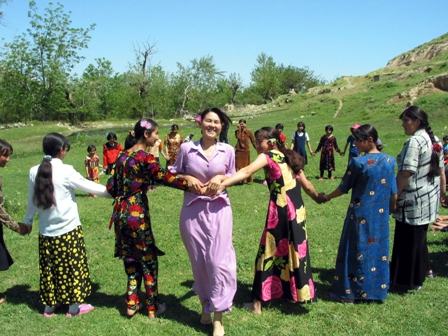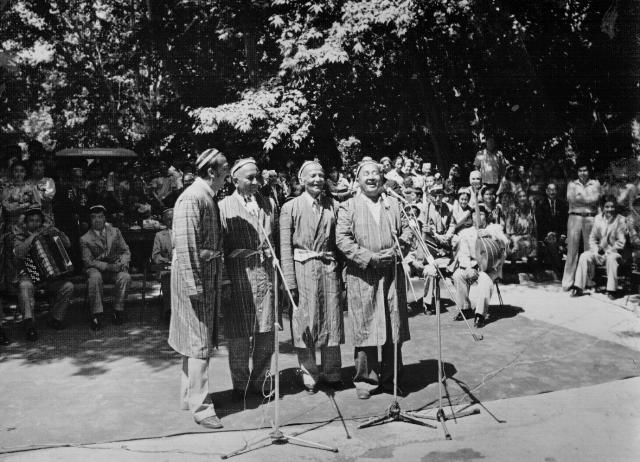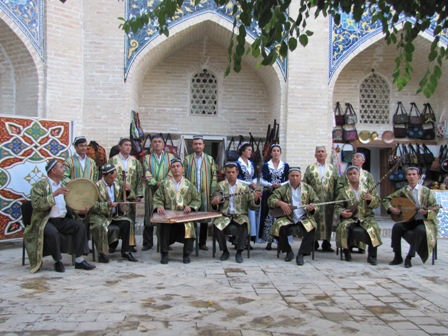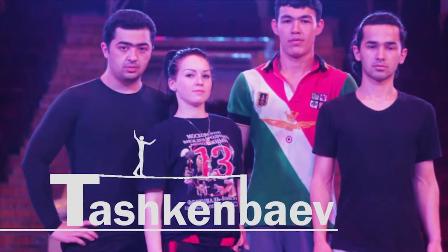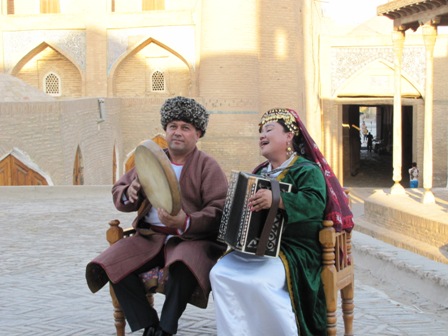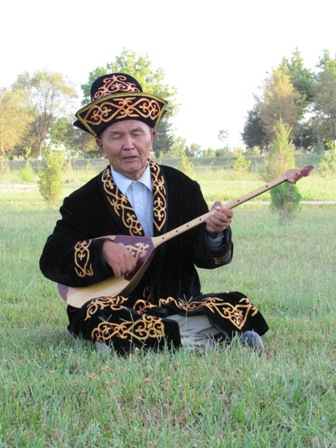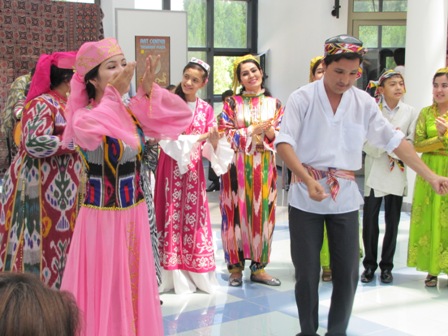Askiya (The Art of Wit)
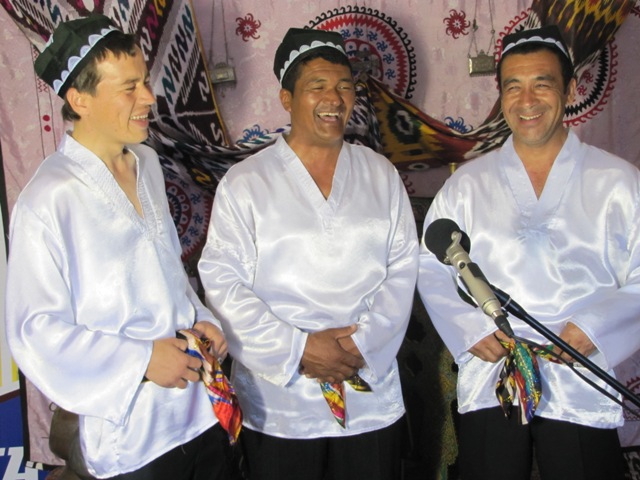
Askiya (in Arabic – "azkiya", literally means "witty", "resourceful") is an original genre of folk-spectacular art, and oral folk creativity, which evolved and became widespread in the Ferghana Valley and Tashkent region. As a result of continuous evolution it achieved the level of art. And it is exactly the peoples living in the above-mentioned regions, who actively participated in askiya performances.
Askiya is a demonstration of thoughts, resourcefulness and eloquence, a performance in the form of a dialogue or competition, in which two or more participants take part in order to show resourcefulness in speech and wittiness, richness of language and vocabulary, artistic and aesthetic tastes. Not to offend his rival the performer (askiyachi or askiyaboz) has to use carefully and skillfully each word and phrase during askiya.
According to written sources, askiya was already spread in the XV-XVII centuries. Zayniddin Vosifiy, a poet and scholar of the ХVI century, wrote that askiya was particularly developed in Herat; and mentioned the name of Mavlono Abdulvose Munshi from among dozens of talented bearers of askiya traditions. Also, some early information about askiya is provided by Alisher Navoi, Ẓahir-ud-Din Muhammad Babur and Khondamir.
Askiya is a play of words and a competition of reasoning, which requires formidable life experience, skills, creativity, tact, intelligence, sensitiveness (in perceiving relevant answers) and worthy behavior. The art of askiya must be dealt by those, who know perfectly the peculiarities of Uzbek language; who have boldness in touching up the shortcomings of contemporary life by means of jokes; who are able to reason quickly, and do not damage the honor and dignity of a rival during dialogue or discussion.
As a rule, every askiya is based on payrov (a theme), which represents an independent artistic creation. It emerges thanks to the consistent expression of thoughts, and through impromptu creation of wits. And certain theme in askiya is developed completely (i.e. from beginning to end) by participants. In so doing, they are not allowed to go beyond it.
Apart from traditional payrovs, such as "Okhshatdim", "Bolasizmi", "Gulmisiz, rayhonmisiz", "Bedana", "Khavsana", "Qofiya", "Bilganlar, bilmaganlar", "Laqab", it is possible to observe usage of the contemporary ones, such as "Pakhta", "Oila", "Kino", "Dorbozlik", "Ashula", "Futbol", etc.
Starting from the second half of the XX century askiya became the type of art, which was began to be performed onstage. This occurred thanks to the activity of famous word men, such as Dehqon yuzboshi Shernazarov, Yasharqul Ostonqulov, Yusuf qiziq Shakarjonov, Ijroqombuva, Ghoyib ota Toshmatov, Tursunbuva Aminov, Abdulkhay Masum Qozoqov and others. Among performers of askiya there were famous singers of katta ashula and maqom songs, actors and bastakors, who were also popular and talented askiyachi. These were Erka qori Karimov, Mamadbuva Sattorov, Jorakhon Sultonov, Rasulqori Mamadaliev, Ghanijon Toshmatov, Shoqosim, Shoalim and Shoakbar Shodjalilovs, Zaynobiddin and Madaminjon Yusupovs, Soib Khodjaev, Abulqosim Toychiev.
Traditions associated with askiya are nowadays preserved and promoted by collectives and groups of askiyachi. These are: Kokand Club of Askiya Fans (led by Jorakhon Polatov and Akromjon Akbarov), askiya groups in Margilan (led by Mamasidiq Shiraev), Khonobod (led by Muhiddin Sultonov), Asaka (led by Jumavoy Khurramov) and Qorasu (led by Qahramon Abduvohidov).
Askiya is the genre, in which mostly men participate. Nevertheless, at present it is possible to see participation of women in it. Especially important in this genre are the following: selection of a theme; an ability to construct and end consistently one's own idea; to improvise; to attract attention of listeners. At the same time mimicry and plastique are other two essential components, which are observed in askiya. Thus, it could be told that askiya is the result of a talent in applying necessary and appropriate words, which is coupled with a quick response in the process of dialogue.
Askiya is a spiritual treasure house, which reflects not only the way of thinking and worldviews of Uzbek peoples, but also their social relations. It is the type of Uzbek humor, which is inextricably intertwined with social traditions. It is a genre, in which life observations manifest themselves. As such, askiya holds great value in demonstrating language- and culture-related peculiarities of Uzbeks.
In order to safeguard and promote askiya art the following measures are undertaken: organization of competitions and festivals of askiya performers; preparation of TV programmes; production of films; holding "Askiya evenings" (in Tashkent, Margilan and Khonobod); publication of books and collections; carrying out scientific studies, etc.
Nowadays, the traditions associated with askiya are mastered based on "ustoz-shogird" ("master-apprentice") traditional methodology. In addition, relevant knowledge about this genre is introduced to the educational process of Institute of Arts and Culture of Uzbekistan.
It bears mentioning that askiya art was inscribed on the UNESCO Representative List of Intangible Cultural Heritage of Humanity in 2014.





